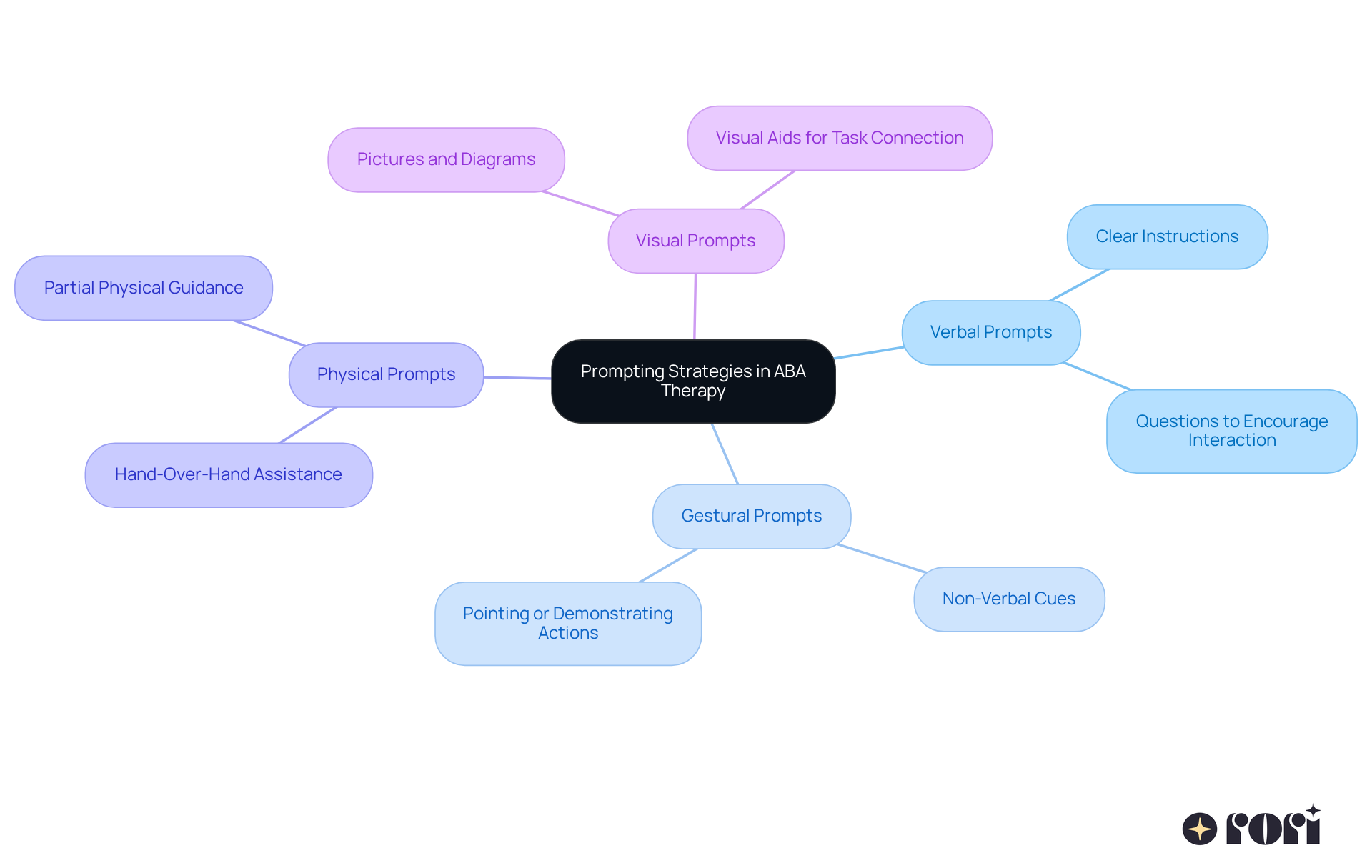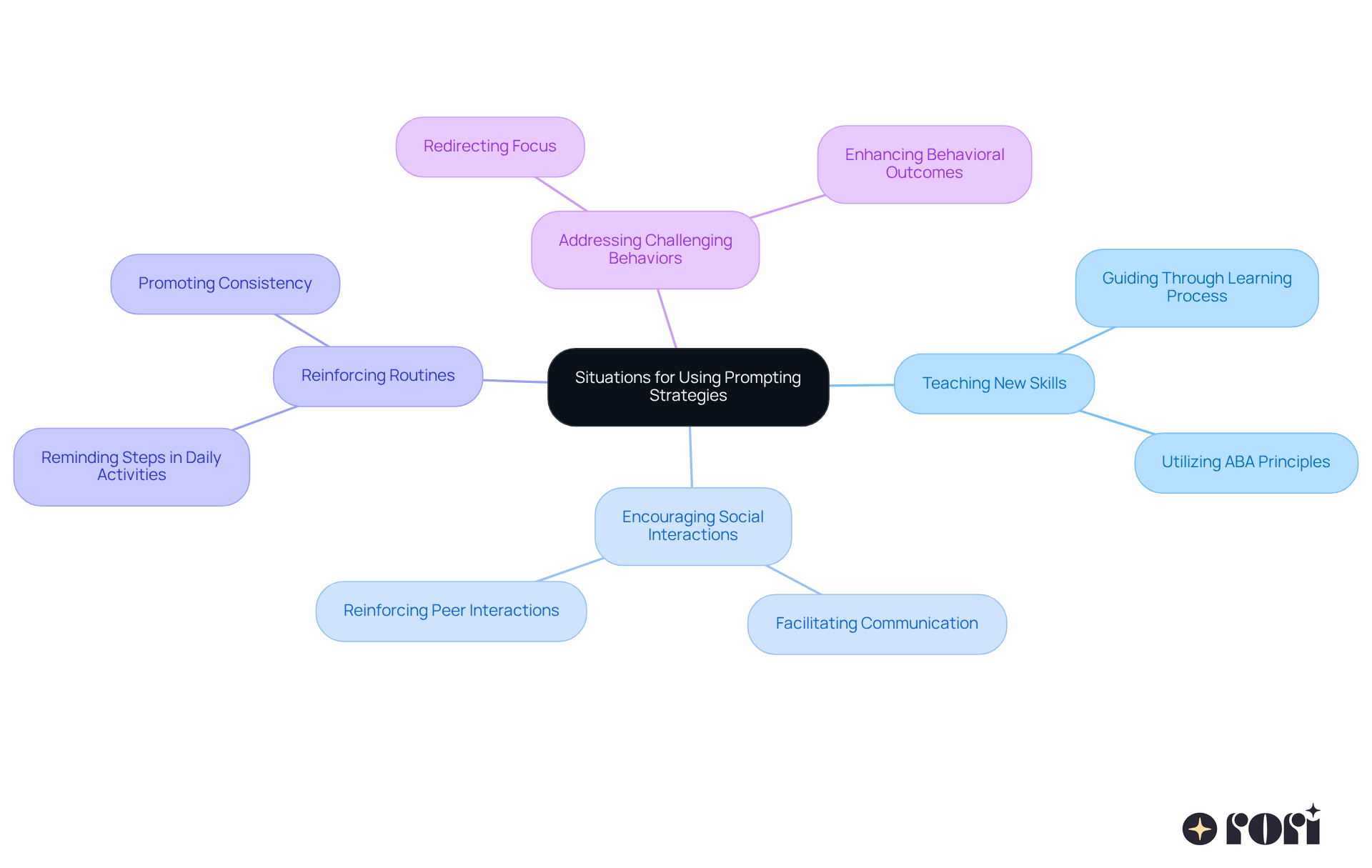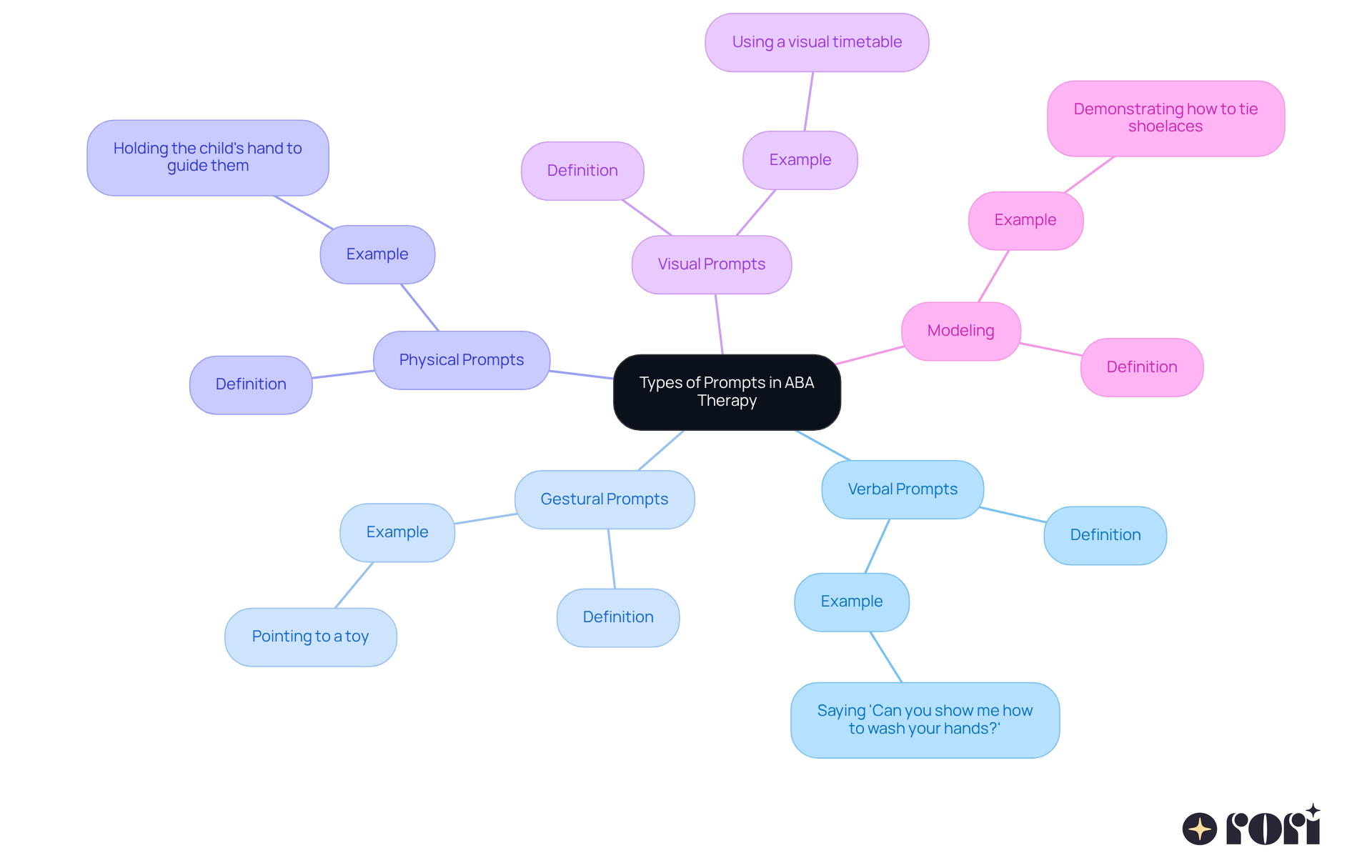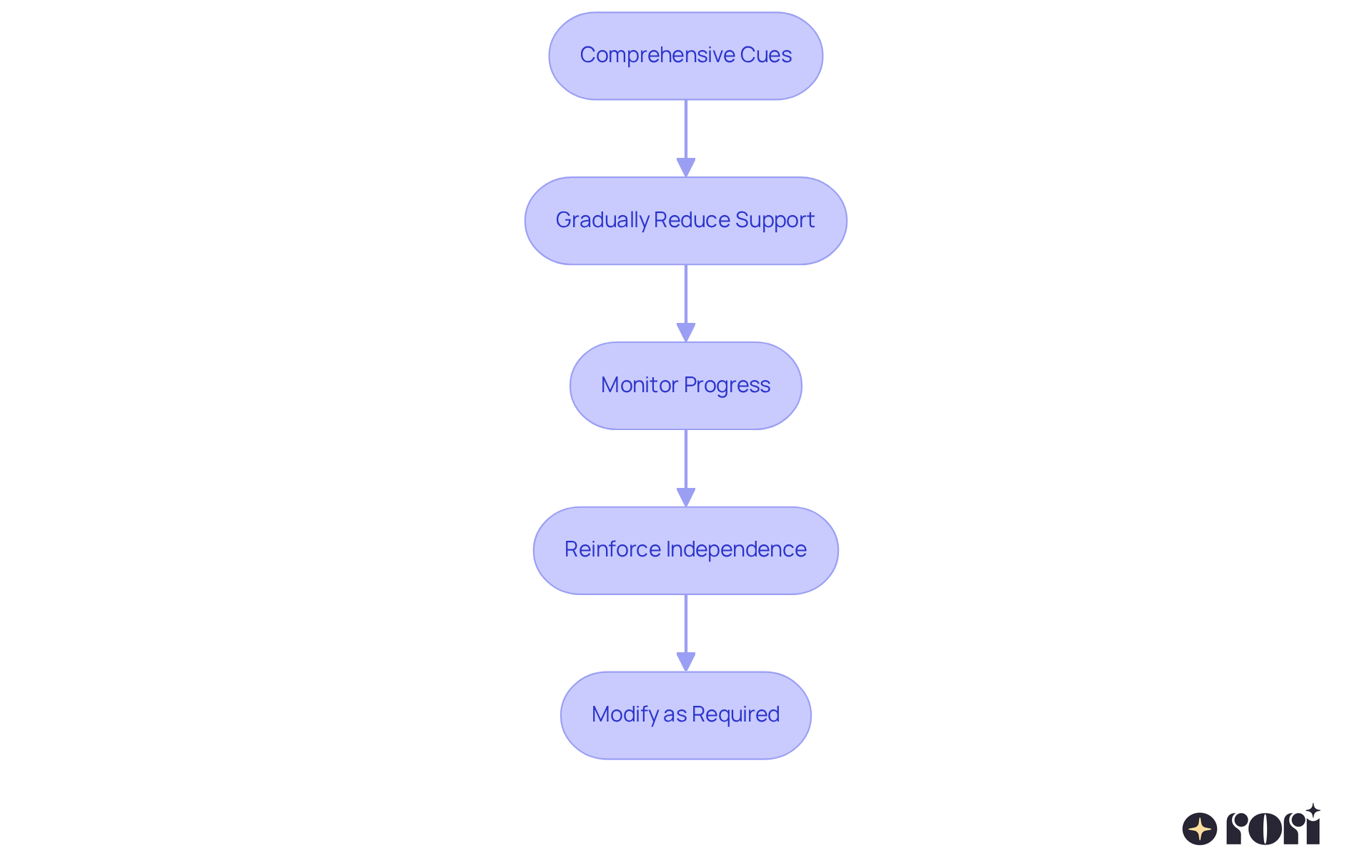When teaching new skills or encouraging social interactions, prompting strategies in ABA therapy can be incredibly helpful! They not only reinforce routines but also address challenging behaviors, enhancing learning and promoting independence in children with autism. 😊
This article highlights different types of prompts—like verbal, gestural, physical, visual, and modeling. It’s also important to involve caregivers and gradually fade prompts to help children gain autonomy and acquire new skills. Let’s explore this together and see how we can support our little ones on their journey!
Understanding when to use prompting strategies in Applied Behavior Analysis (ABA) therapy can truly be a game-changer for children with autism and their caregivers. These techniques not only help facilitate learning but also empower children to gain independence in their daily lives.
But here’s the challenge: figuring out the right moments and methods to implement these strategies effectively. What are the key situations that call for prompts? And how can caregivers ensure they are using them to encourage positive behavioral outcomes? Let’s explore this together!
Encouragement methods in Applied Behavior Analysis (ABA) therapy are essential techniques designed to help foster desired behaviors in children with autism. These strategies provide specific cues or hints that guide a young individual in performing a particular behavior or skill, leading us to consider when do we use prompting strategies? The main goal of prompting is to facilitate learning by steering the individual toward the right response, which raises the question of when do we use prompting strategies to reinforce positive behavior and encourage independence.
Let’s break down some common types of prompts:
Research shows that when do we use prompting strategies, they significantly enhance learning outcomes for individuals with autism. For instance, studies indicate that the question of when do we use prompting strategies, such as a structured prompting hierarchy like the most-to-least or least-to-most techniques, improves learning while reducing mistakes and frustration. This structured approach not only supports smooth learning but also boosts the child’s confidence as they acquire new skills.
Successful implementation of these techniques requires teamwork between therapists and caregivers. Open communication ensures that we understand when do we use prompting strategies at home, reinforcing the skills learned during therapy sessions. Educating caregivers is vital, as it empowers them with ABA principles and techniques, enabling them to support their child's behavioral goals effectively. As one experienced ABA therapist wisely noted, 'Effective prompting is crucial for guiding learners toward independence and self-sufficiency.' By understanding and applying these strategies, parents and caregivers can play a pivotal role in their child's development, leading to improved behavior and enriching learning experiences.
Additionally, ongoing data collection is essential for evaluating progress and making necessary adjustments to prompting techniques. This ensures that interventions remain flexible and responsive to the individual’s evolving needs. So, let’s explore this together! We’re here to help you every step of the way!

In various situations where a young person might need a little extra support to engage in a desired behavior or skill, the question arises: when do we use prompting strategies? Let’s look at some common scenarios:
By recognizing these situations, parents can effectively weave prompting strategies into their child’s daily routine, prompting the question of when do we use prompting strategies? This not only enhances support but also fosters a collaborative environment for their development. Let’s explore this together!

In ABA therapy, various types of prompts are utilized, raising the question of when do we use prompting strategies to facilitate learning and skill acquisition while empowering caregivers to support their child's behavioral goals effectively.
Verbal Prompts: These are spoken instructions guiding the child toward the desired behavior. For example, saying, "Can you show me how to wash your hands?" encourages the little one to engage in the task, reinforcing the caregiver's role in providing clear guidance.
Gestural Prompts: Non-verbal cues, like pointing or nodding, serve as gestural prompts. Indicating a toy can encourage the young one to start playing, effectively bridging the gap to independent action and enabling caregivers to adjust their strategies based on the child's responses.
Physical Prompts: This type involves direct physical assistance, such as holding the child's hand to guide them through a task. This approach is especially beneficial for younger individuals or those who may find complex actions challenging, highlighting the importance of caregiver participation in promoting independence.
Visual Prompts: Visual aids, such as images or graphs, offer clear references for youngsters. For instance, using a visual timetable to outline daily tasks helps children grasp routines and expectations, further enabling caregivers to create a stable learning environment.
Modeling: Demonstrating the desired behavior allows the child to observe and imitate. For instance, showing how to tie shoelaces before asking the child to try fosters learning through imitation, reinforcing the caregiver's role in skill acquisition.
By understanding and applying these various types of cues, parents can tailor their approach to match their child's unique learning style, enhancing the effectiveness of ABA therapy, particularly when do we use prompting strategies? It's also vital to track progress through data collection and adjust cues as needed to prevent reliance on assistance, which can hinder a child's autonomy. As professionals in the field emphasize, they often discuss when do we use prompting strategies in a thoughtful, personalized manner to greatly enhance the effectiveness of ABA therapy, fostering skill development and independence. This method not only supports the child's growth but also equips caregivers with the knowledge and skills needed to make informed choices that positively impact their child's progress. Plus, the involvement of skilled behavior analysts in creating personalized plans ensures that the strategies employed are tailored to meet each individual's specific needs.
Let’s explore this together! Remember, we’re here to help you every step of the way!

Fading techniques are essential in ABA therapy, helping young learners gradually become more proficient in their skills. Let’s explore how to implement fading effectively:
Using these fading methods not only promotes growth but also encourages autonomy. It helps youngsters respond to natural signals instead of relying solely on cues. Research shows that effective fading techniques can significantly enhance a young person's ability to handle tasks independently, leading to greater self-esteem and confidence.
As one behavior analyst noted, "The ultimate goal of using such prompts is to promote independence in task execution." By following these strategies, parents can empower their children to thrive and develop essential life skills. We’re here to help you every step of the way!

Understanding when to use prompting strategies in ABA therapy is so important for helping children with autism gain independence and encouraging positive behaviors. By using these techniques, caregivers and therapists can effectively guide kids through their learning journeys, boosting their skills and confidence. When we strategically apply verbal, gestural, physical, and visual prompts—along with modeling—we create a nurturing environment where children can truly thrive.
Throughout this article, we’ve explored the different types of prompts and how they can be applied. From teaching new skills to tackling challenging behaviors, knowing when to prompt can really enhance a child’s learning experience. Plus, we highlighted how essential teamwork is between caregivers and therapists. Open communication and ongoing data collection allow us to adapt our prompting strategies to meet each child’s unique needs.
Incorporating these prompting strategies into daily routines not only helps with skill acquisition but also creates a collaborative atmosphere for growth. When caregivers and professionals join forces, they foster a supportive environment that empowers children to achieve greater independence. Our ultimate goal is to equip kids with the tools they need to navigate their world with confidence. Embracing these strategies can lead to transformative results, making a lasting impact on a child’s journey toward self-sufficiency. Let’s explore this together and continue to support our children every step of the way!
What are prompting strategies in ABA therapy?
Prompting strategies in Applied Behavior Analysis (ABA) therapy are techniques designed to encourage desired behaviors in children with autism by providing cues or hints that guide them toward performing specific behaviors or skills.
What is the main goal of using prompting strategies?
The main goal of prompting is to facilitate learning by steering the individual toward the correct response, reinforcing positive behavior, and encouraging independence.
What are the common types of prompts used in ABA therapy?
The common types of prompts include: - Verbal Prompts: Clear instructions or questions to encourage responses. - Gestural Prompts: Non-verbal cues like pointing or demonstrating actions. - Physical Prompts: Hand-over-hand assistance to guide the child through tasks. - Visual Prompts: Visual aids such as pictures or diagrams to help connect tasks with representations.
How do prompting strategies enhance learning outcomes for individuals with autism?
Research indicates that structured prompting strategies, such as most-to-least or least-to-most techniques, improve learning outcomes by reducing mistakes and frustration, while also boosting the child’s confidence as they acquire new skills.
Why is teamwork between therapists and caregivers important in implementing prompting strategies?
Teamwork is crucial because open communication ensures that caregivers understand how to use prompting strategies at home, reinforcing the skills learned during therapy sessions and supporting their child's behavioral goals.
What role do caregivers play in the application of prompting strategies?
Caregivers play a pivotal role by being educated in ABA principles and techniques, which empowers them to effectively support their child's development and improve behavior.
Why is ongoing data collection important in ABA therapy?
Ongoing data collection is essential for evaluating progress and making necessary adjustments to prompting techniques, ensuring that interventions remain flexible and responsive to the individual’s evolving needs.